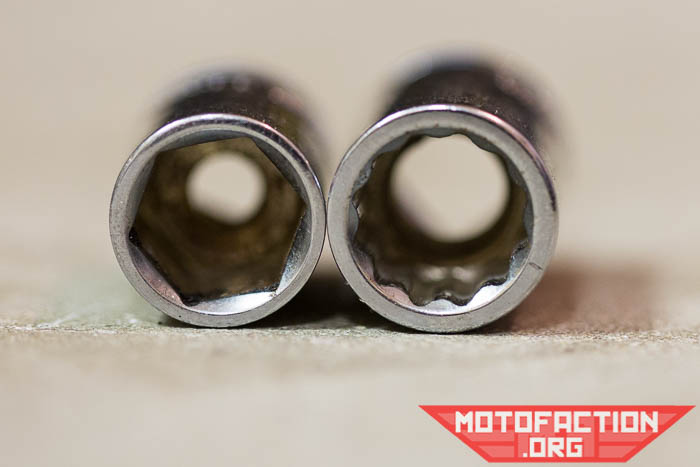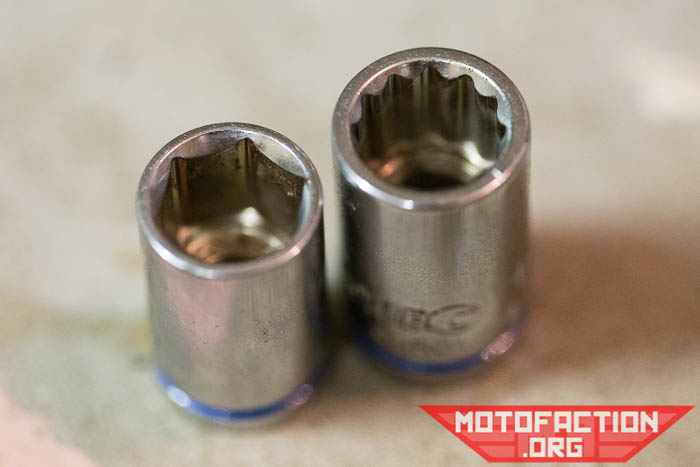Before using this site please read the site disclaimer. Also please note that any links provided may be part of an affiliate programme (viz. eBay, Amazon) which helps support the site as I will earn a commission when visitors make a qualifying purchase.
Which is better - a six or twelve sided socket (sometimes referred to as six point vs twelve point)? Both have their place! Here's a shot of both - six point on the left, twelve sided on the right:

Twelve sided sockets have the advantage of being able to be fitted onto a fastener at twice as many angles. This advantage is somewhat negated when the sockets are used with a ratchet wrench, as the wrench can be adjusted to many different angles itself, but is relevant when being used with a breaker bar, T-handle or similar tool which lacks a ratcheting mechanism.
Six sided sockets have thicker walls than their twelve sided counterparts and grasp the fastener more in the center of it's flat faces, rather than in the corners - meaning that the six sided sockets are more appropriate when used in high-torque applications.

A high quality (often more expensive, not always) 12-sided socket is likely to be functionally equal to a 6-sided socket for most applications. If you have 12-point fasteners, you must use a 12-point socket. In terms of high-torque fasteners such as head bolts, suspension components, flywheel bolts and the like six sided sockets are often a good investment as rounding these off can be expensive and time consuming to remove and replace.
My personal preference is to use a 6-point socket where possible - I favour the Ko-ken Zeal 6-point range (as seen in this review) and high-tooth-count ratchets such as this Nepros unit - the high tooth count largely renders the 12-point sockets unnecessary in most circumstances.
In 2019 the server has had to double in capacity to support the growing site... please consider dropping the site a donation to help cover the costs! Check out our Patreon for support options, buy a shirt, buy our apps, use my NordVPN affiliate link to sign up to their service, or donate via Paypal:
| Paypal $5 link ->> | |
| Paypal $10 link ->> |